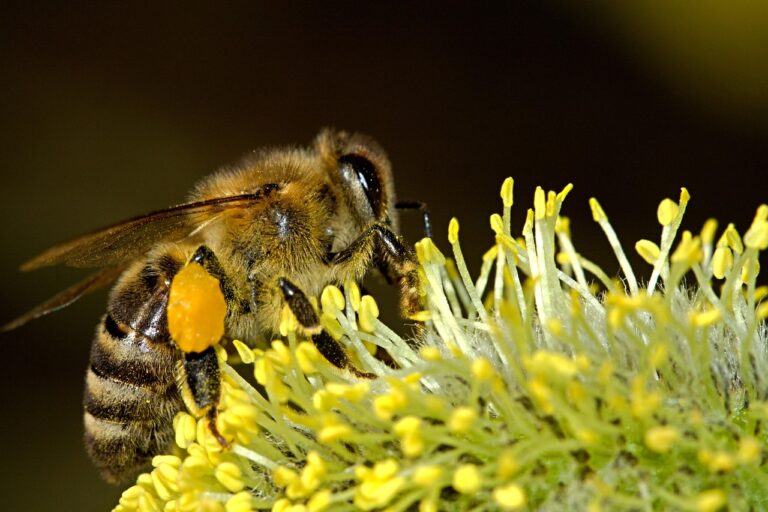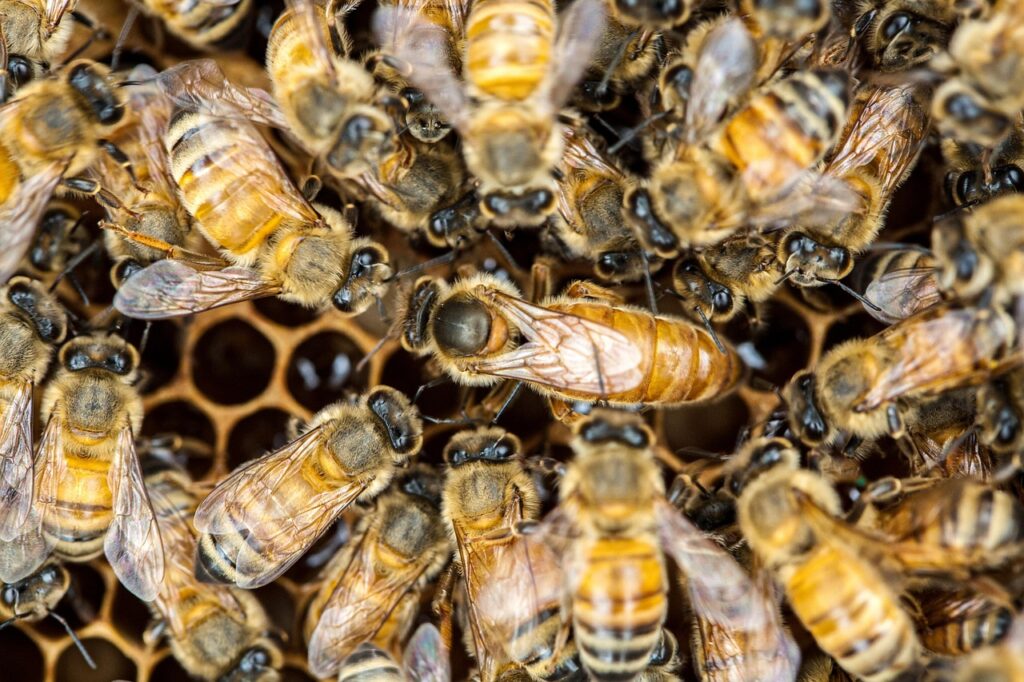Ever wonder what bees do when they’re out in the field?
When bees are out in the field, their primary activities are foraging for nectar and pollen, collecting water, and gathering plant resins (propolis).
They visit thousands of flowers a day, often traveling several miles from the hive, and play a crucial role in pollinating plants as they gather resources for their colony[1][2].
Key details about bee fieldwork:
• Nectar collection: Bees use their long tongue (proboscis) to extract nectar from flowers and store it in a specialized “honey stomach.” Nectar provides essential carbohydrates and is later converted to honey back at the hive[3][4].
• Pollen gathering: Bees collect pollen, which is rich in protein, by brushing it onto their legs; this is vital food for developing larvae in the hive[1][4].
• Water and propolis: Some bees collect water to cool and hydrate the hive and may gather plant resins (propolis) for hive maintenance and sealing cracks[4][5].
• Pollination: As bees move from flower to flower, pollen sticks to their bodies and transfers between plants, enabling plant reproduction—this process underpins much of global agriculture and natural ecosystems[1][4].
• Species and area fidelity: A bee will typically visit only one type of plant per foraging trip; this behavior supports efficient pollination and maximizes food quality for the hive[1].
• Communication: Foraging bees communicate food location using the “waggle dance” when they return to the hive, informing others about the direction and distance to rich food sources[1][2].
In addition to foraging, during summer and fall, some bees (like bumblebee queens and solitary bee females) may also be searching for mates, laying eggs, or building nests for the next generation[6][7].
The bees’ fieldwork is critical for their survival and for the broader environment due to their role as pollinators. Bee activity is highly organized, perfectly adapted to current weather and resource needs, and essential for both their colony and plant life[1][4][2][6].
⁂
1. https://www.hobbyfarms.com/25-things-didnt-know-honeybee-foraging/
2. https://www.omlet.co.uk/guide/bees/about_bees/foraging/
3. https://www.chicagobotanic.org/plantinfo/smartgardener/how_honey_happens
4. https://www.perfectbee.com/learn-about-bees/the-life-of-bees/why-do-bees-forage
5. https://canr.udel.edu/maarec/honey-bee-biology/seasonal-cycles-of-activities-in-colonies/
7. https://blogs.oregonstate.edu/gardenecologylab/category/what-are-the-bees-doing/



